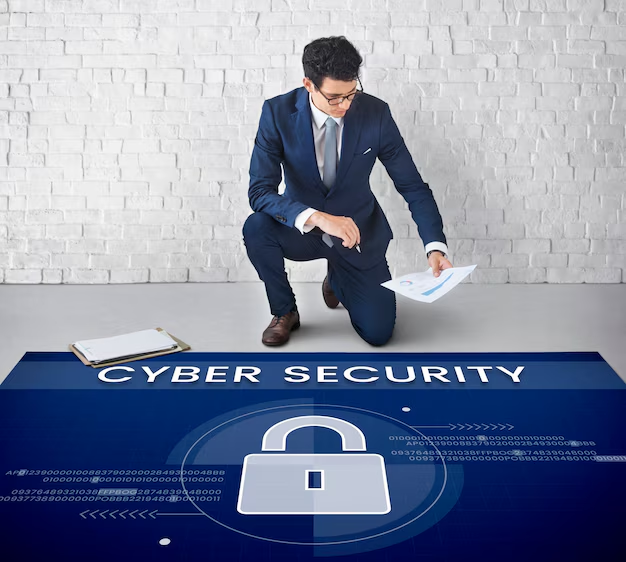1 Understanding the Seven Types of Cyber security
In the contemporary digital world, These seven categories of cyber security is growing in importance for all stakeholders—individuals, businesses, and governments.. Our heightened dependence on technology and the internet has rendered us more susceptible to cyber attacks. Understanding the many kinds of cybersecurity solutions that are available is crucial for defending against these threats. The seven main categories of cybersecurity are examined in this article along with their importance and how they cooperate to provide a strong defense against online threats.
2 Network Security: The First Line of Defense
Any cybersecurity approach must start with network security. It entails safeguarding data availability, confidentiality, and integrity when it moves over or is stored inside a network. Preventing unauthorized access, misuse, malfunction, alteration, destruction, or unlawful disclosure of network resources is the main goal of this kind of security. Network security is often achieved through the use of techniques like encryption, firewalls, and intrusion detection systems (IDS). Strong network security measures can be put in place by enterprises to stop hackers from breaking into their systems and gaining access to private data.

3 Application Security: Safeguarding Software and Devices
Making sure that devices and software are free of flaws that attackers could exploit is the main goal of application security. Using a variety of methods and resources, this kind of cybersecurity guards apps against attacks at every stage of their lifespan, from development to deployment and beyond. Code reviews, penetration testing, and applying security updates and patches are common procedures. Organizations can stop attackers from utilizing software flaws to obtain unauthorized access to systems and data by concentrating on application security.
4 Information Security: Protecting Data Integrity
The study of protecting data integrity, confidentiality, and availability is known as information security, or infosec for short.. This kind of cybersecurity is putting policies in place to stop unauthorized people from accessing, using, disclosing, disrupting, changing, or destroying data. Sensitive information is frequently protected using methods like data masking, access limits, and encryption. Information security is essential for meeting legal requirements, upholding stakeholder and customer trust, and both.
5 Operational Security: Ensuring Procedural Safety
Data management and protection processes and procedures are the main targets of operational security, or OpSec. Identification and mitigation of hazards related to an organization’s daily activities are the goals of this kind of cybersecurity. Security policy and procedure implementation, risk assessments, and incident response planning are important practices. Organizations may reduce the risk of data breaches and other security incidents by making sure operational security measures are in place.
6 Disaster Recovery and Business Continuity: Planning for the Worst
Business continuity and disaster recovery are essential elements of an all-encompassing cybersecurity plan. These precautions entail organizing and getting ready for possible cyberattacks that can interfere with company operations. Business continuity makes ensuring that crucial operations can continue both during and after an incident, while disaster recovery concentrates on recovering IT systems and data following a cyberattack. Through the implementation of comprehensive strategies for disaster recovery and business continuity, firms can mitigate the effects of cyberattacks and promptly resume regular operations.
7 End-User Education: The Human Factor in Cybersecurity
One important but frequently disregarded component of cybersecurity is end-user education. The goal of this kind of security is to inform users and staff members about the dangers posed by cyberattacks and how to safeguard their own information and that of their companies. End users are often educated through frequent security upgrades, awareness campaigns, and training programs. Through equipping workers with the necessary knowledge and abilities to identify and address cyber risks, organizations may considerably lower the likelihood of successful assaults.
8 The Human and Mobile Elements
End-user education, which is sometimes seen as the most important cybersecurity layer, is the sixth category. This entails teaching people to spot possible dangers and steer clear of dangerous actions, such opening unknown attachments or clicking on dubious links. The seventh category of security is mobile security, which focuses on safeguarding data on portable electronics like tablets and smartphones. This covers safety precautions including encryption, secure access controls, and remote erasing. Organizations and people can better defend themselves against the always changing cyber threat landscape by being aware of these seven forms of cybersecurity.

9 Protecting Data and Operations((seven categories of cyber security))
Information security, which guarantees the preservation of data integrity and privacy during storage and transmission, is the third category. Access control and encryption are examples of this. The fourth category is operational security, which deals with choices and procedures for managing and safeguarding digital assets. This comprises policies and guidelines that specify where and how data can be exchanged or stored. Disaster recovery and business continuity, which includes plans and tactics to recover from cyberattacks and carry on with operations, is the fifth category. This guarantees that following an incident, an organization can promptly resume regular operations.
Conclusion
In summary, each of the seven categories of cybersecurity—mobile security, disaster recovery and business continuity, network security, application security, information security, operational security, and end-user education—is essential to thwarting cyberattacks. Organizations and individuals may greatly lower their risk of cyberattacks and guarantee the security and integrity of their data and systems by putting in place thorough security measures in all these areas.


